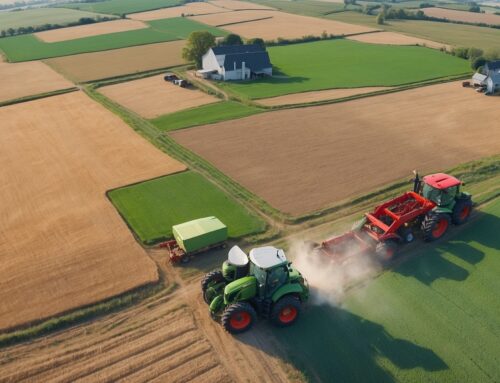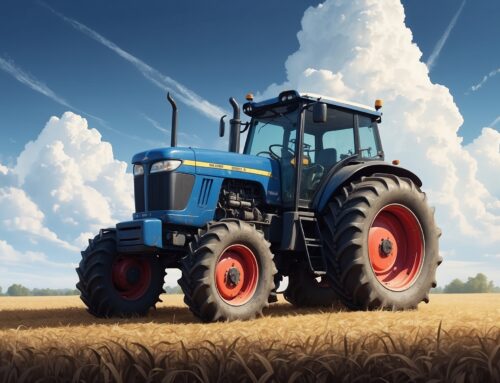Hey there, fellow farmers! Let’s take a moment to talk about soil health. We all know that good soil is the backbone of a productive farm—it’s what helps us grow those big yields and keep the bank happy enough to let us get a new tractor tire every now and again. But let’s face it: managing soil health is like raising a kid. There’s a lot of guesswork, worrying if you’re doing it right, and hoping that what you’re doing today pays off down the road.
But guess what? Thanks to IoT (Internet of Things), we don’t have to just guess anymore. IoT technology is helping us farmers stay on top of soil health like never before. So, if you’re tired of poking the dirt and crossing your fingers, stick around and let’s chat about how these little gizmos are making a big difference in keeping our soil in tip-top shape.
The Dirt on Soil Health: It’s More Than Just Dirt
Now, if you’ve ever spent time scratching your head, wondering why one part of your field looks lush and green while the other half looks like it’s about to give up, you’re not alone. Soil is a living, breathing thing—full of microbes, nutrients, and a whole lot of complexity that’s not always easy to figure out. Moisture, pH, nutrients, compaction—all of it matters.
IoT sensors can take the mystery out of that equation by giving us real-time data on what’s happening in the soil. Picture having tiny helpers out in the field, monitoring everything from moisture to nutrient levels and sending you regular updates. Kind of like your nosy neighbor—except this time, the nosiness is actually helpful!
Moisture Sensors: Because Overwatering is for Houseplants
Let’s start with something simple: moisture. Water is a precious resource, especially when Mother Nature decides she’s taking a vacation (looking at you, July and August). Soil moisture sensors tell us when it’s time to water and, maybe more importantly, when it’s time to stop. With IoT moisture sensors, you’re not just eyeballing the field or feeling the top inch of soil and making a wild guess. These sensors are measuring the moisture down where it counts—at the root level.
Instead of watering based on the old “just in case” schedule, you get precise information that helps save water, save costs, and keep those roots happy. It’s kind of like those rain gauges your granddad used to swear by, but on steroids—and with way fewer broken parts.

Nutrient Sensors: Feeding Your Soil Without Overdoing It
Now let’s talk about nutrients. Fertilizer’s not exactly cheap, and dumping a bunch of it on the field without knowing what’s really needed isn’t exactly a recipe for success—unless you’re trying to grow algae in the local pond. IoT nutrient sensors measure the levels of important nutrients in the soil like nitrogen, phosphorus, and potassium. They help you figure out exactly what the soil needs (and what it doesn’t), so you can be precise with your applications.
This means less wasted fertilizer, fewer trips across the field (saving fuel!), and better yields because your crops get exactly what they need, when they need it. Plus, it keeps the neighbors happy because you’re not turning their well water into a science experiment.
The Real MVP: Soil Compaction and Aeration
How about soil compaction? We all know that heavy machinery’s a necessary evil—those big ol’ tractors and combines are what get the job done, but they’re not exactly gentle on the soil. Compaction is the silent yield killer that creeps up when we’re not looking, squishing all the air pockets out of the soil and making it tough for roots to grow.
IoT helps here too. Compaction sensors and data models can give you a heads-up if you’ve overdone it with the heavy equipment. They help figure out where compaction is becoming a problem and let you know when it’s time to break out the aerator and give your soil some breathing room. Because happy soil—just like a happy cow—needs air.
Data-Driven Soil Health: A Recipe for Success
The real beauty of IoT is that it’s data-driven. All these sensors are gathering data, and that data tells a story. It’s the kind of story that we, as farmers, have always been interested in but never quite had the tools to understand. Now, instead of just guessing why yields are lower in one spot, you can check your dashboard and see that maybe moisture didn’t get down far enough, or maybe the pH level was a bit off.
Think of it like baking a cake. Sure, you could throw some ingredients together and hope for the best, but when you actually measure the flour, sugar, and eggs, you’re a lot more likely to end up with a cake that rises instead of one that’s better off as chicken feed. IoT sensors let us measure the “ingredients” in our fields, so we know what we’re dealing with and can adjust our recipe for success.
Keeping It Simple
At the end of the day, IoT is all about simplifying our lives. I know, it might not feel simple to have technology buzzing around, measuring every little thing in the field. But the truth is, once you get used to the system, it’s a lot less complicated than running around with notebooks, moisture meters, and your gut feeling.
With IoT, your soil health becomes something you can track and measure, not something that keeps you up at night wondering if you’ve done enough. It’s about working smarter, not harder. So, let’s embrace the tech, keep those fields healthy, and make sure we’re setting up for some great harvests—because at the end of the day, happy soil makes for happy farmers.
Happy growing, folks!





